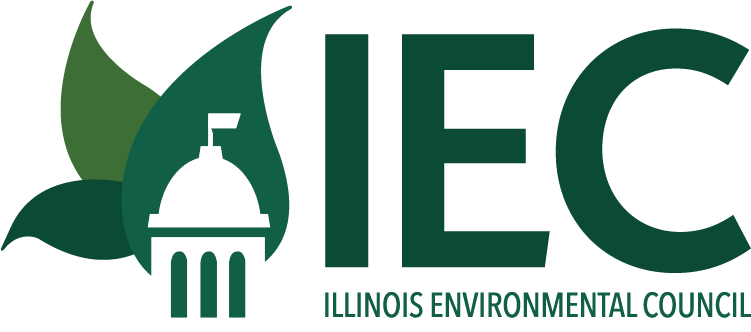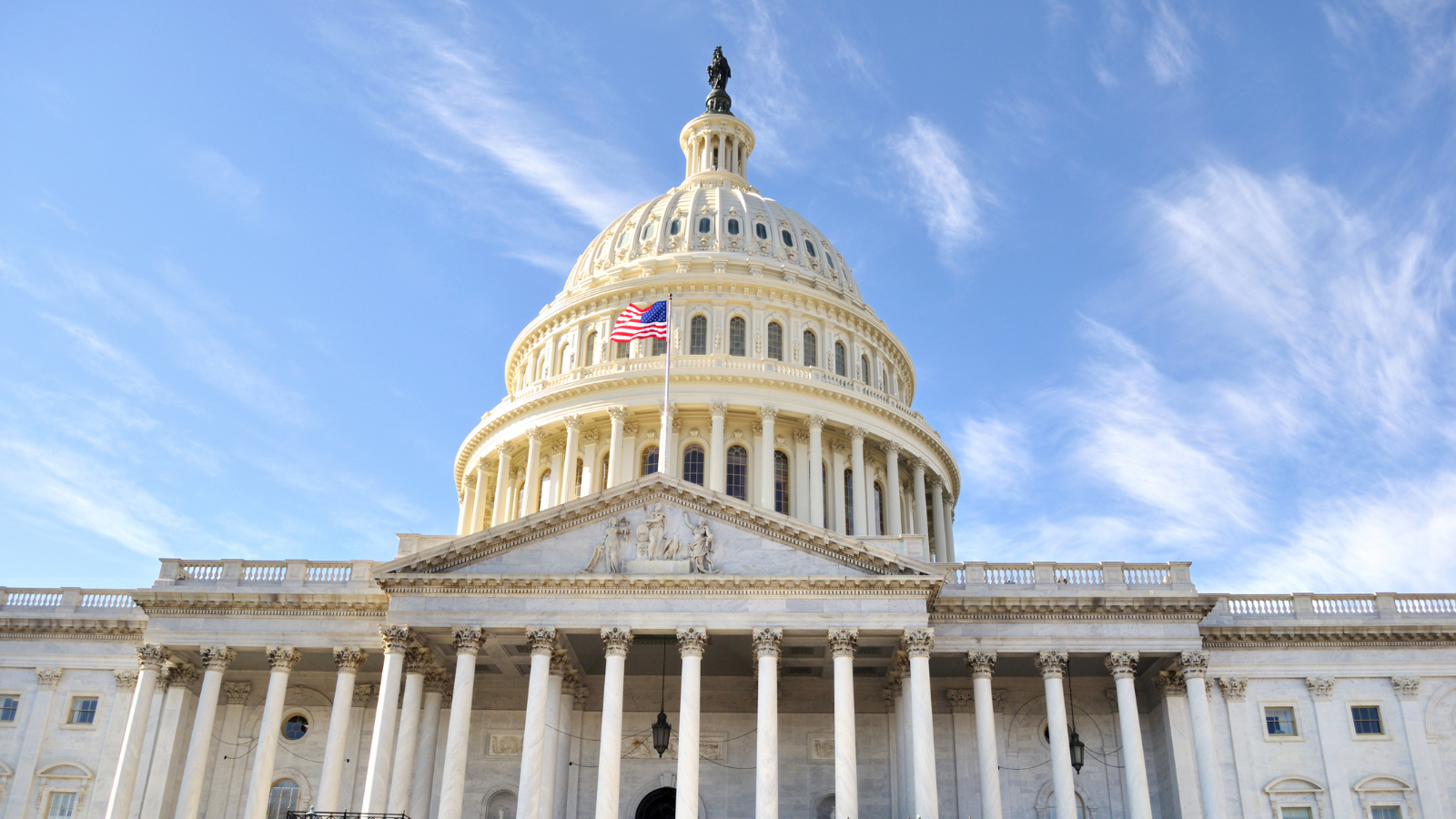Congress failed to meet its October 1 deadline to pass a funding bill, triggering a government shutdown that has suspended key environmental programs, furloughed government employees, closed national parks, and stopped non-essential services.
This shutdown is the direct result of Republicans failing to govern despite controlling both chambers of Congress and the White House. House Republicans, in particular, have been unable to work within their own party or across the aisle to keep the federal government open and adequately funded, putting hundreds of thousands of jobs at risk, driving up costs for families and communities, and jeopardizing the health and safety of people in Illinois, and across the country.
To help our members, partners, and the public better understand the situation, IEC has put together an analysis that explains the government shutdown, how it directly affects Illinois communities, and what it means for the work we do at IEC and alongside our affiliates.
What is a Government Shutdown?
A government shutdown occurs when Congress fails to pass legislation to fund federal agencies and operations. Without an approved budget or continuing resolution (CR), many federal functions cease or scale back dramatically.
The most recent shutdown occurred in late 2018 and stretched into early 2019. During that shutdown, we saw significant impacts, including:
- The Food and Drug Administration (FDA) suspended routine inspections, increasing public health risks.
- The National Park Service (NPS) stopped trash collection and road repairs, creating unsanitary conditions and unsafe roads, while some national parks and museums closed entirely.
- Over 86,000 immigration court hearings were canceled, exacerbating existing backlogs.
- The shutdown also threatened the Temporary Assistance for Needy Families (TANF) program in some states, putting low-income families and children at risk.
Shutdowns vary in length and severity. Some have lasted only a few days with minimal disruptions, while others have stretched on for weeks and caused economic, social, and environmental consequences. To end a government shutdown, Congress must vote on and pass, and the President must sign, legislation that funds federal programs and agencies, likely in the form of a CR. To pass the CR, both parties must agree on a funding measure and reach a 60-vote threshold in the Senate, which requires votes from both political parties.
Who is Impacted?
Federal agencies divide their employees and services into two categories:
Essential: Workers whose duties are critical to safety and national security, such as military personnel, air traffic controllers, and certain law enforcement officers. During a shutdown, these workers continue working but often without pay until the shutdown ends.
Non-essential: Employees whose work is considered non-urgent. During a shutdown, these workers are furloughed, meaning they are placed on temporary, unpaid leave until Congress restores funding.
Additionally:
Contractors and grantees: Many individuals and organizations who rely on federal contracts or grants face delayed payments or suspended projects, creating ripple effects for local economies and nonprofits.
How Does the Government Shutdown Affect Illinois?
The U.S. Office of Personnel Management reports that Illinois is home to more than 45,000 federal civilian employees, excluding more than 20,000 military personnel and contractors.
Federal Agencies: The Environmental Protection Agency (EPA) plays a central role in Illinois by overseeing clean air and water enforcement, administering federal grants, and supporting scientific research and community programs. During a shutdown, most EPA staff are furloughed, leaving only emergency personnel in place. This means routine inspections, enforcement of pollution standards, and progress on permitting or Superfund cleanups in Illinois are delayed. Grant programs that fund state agencies, local governments, and nonprofits also stall, slowing investments in clean water infrastructure, lead service line replacement, and climate resilience.
The Department of Energy (DOE) provides crucial funding and technical support for Illinois’ energy infrastructure, including grid resilience, battery storage development, renewable energy deployment, and various efficiency programs. During a shutdown, many DOE activities pause, leaving only essential staff to oversee nuclear security and emergency operations. Research partnerships with Illinois universities and national labs, such as Argonne and the National Renewable Energy Laboratory (NREL), may experience stifled research and development and interruptions in grant administration or project timelines. Energy efficiency and clean energy grant programs that Illinois communities and businesses rely on also face delays, creating uncertainty for long-term grid planning and the clean energy market, which undermines our clean energy goals.
The Department of Transportation (DOT) and related agencies, including the Federal Aviation Administration (FAA) and the Transportation Security Administration (TSA), are critical to Illinois’ travel and commerce. During a shutdown, air traffic controllers and TSA officers remain on duty but without pay, raising concerns over staffing shortages and travel disruptions at major hubs like O’Hare and Midway. Non-essential grantmaking and infrastructure project reviews are suspended, potentially slowing progress on road, rail, and public transit improvements across the state. Illinois communities may see ripple effects in delayed funding for transit agencies, while passengers could face longer wait times and reduced service quality at airports.
Food Security: With nearly 1.94 million Supplemental Nutrition Assistance Program (SNAP) recipients and around 165,000 SNAP for Women, Infants, and Children (WIC) participants in Illinois, disruptions or administrative delays in nutrition programs would put substantial pressure on families and local food banks. States often use contingency funds to smooth short interruptions, but a longer shutdown poses a higher risk.
Public Lands, Parks, and Tourism: The Lincoln Home National Historic Site in Springfield is temporarily closed. With park rangers furloughed, visitors can expect to see additional parks and sites in Illinois, such as the Pullman National Monument in Chicago and Ulysses S. Grant Home in Galena, closed or operating with minimal staff. With the National Park Service’s contingency plan now in effect, tourism-dependent businesses, particularly in central and southern Illinois, are set to lose visitors and revenue as state parks remain open, and federal closures will reduce out-of-state tourism traffic and diminish educational programs.
Forest Service Operations: The shutdown will sharply disrupt the U.S. Forest Service operations, including in Illinois’ Shawnee National Forest (about 498,000 acres). With nearly 13,000 of 32,390 (39 percent) Forest Service employees furloughed, many recreational sites are closed or have plans to scale back services, even here in Illinois. Essential functions like wildfire suppression will continue, but our work on prescribed burns, fuel reduction, and state wildfire-preparedness grants may be postponed. That’s critical in Illinois: in FY2025, State Fire Capacity funds trained 190 firefighters and treated 11,000 acres of hazardous fuels. Delays in state grants and reimbursements could hinder rural fire departments, of which Illinois has around 1,280.
Soil and Water Conservation Districts: Illinois has 97 Soil and Water Conservation Districts (SWCDs), but only 5–6 own their office space, meaning nearly 90 percent share offices with the federal Natural Resources Conservation Service (NRCS). During the government shutdown, all U.S. Department of Agriculture (USDA) offices are closed and will not reopen until funding is restored. As a result, SWCD staff are prohibited from using any federal resources, including computers, phones, printers, internet, or USDA-imaged systems, and must stop all work on federal programs. Districts that own their office buildings may continue to use them, but staff should avoid using any federal equipment while there. Importantly, any reimbursable work performed during the shutdown may not be paid out. The National Association of Conservation Districts (NACD) is still awaiting formal guidance on its grants, particularly Technical Assistance Grants with conservation districts, but anticipates a pause in activities. With federal staff who process payments likely furloughed, NACD expects that payments or advances will be delayed.
Disaster Preparedness: The Federal Emergency Management Agency (FEMA) is facing furloughs on top of dwindling funds in its Disaster Relief Fund, hindering our state’s ability to respond to flooding, tornadoes, and other severe weather events. The National Flood Insurance Program (NFIP) also lapsed when the shutdown began, meaning no new NFIP policies or renewals can be issued until Congress acts. While existing policies remain in force, new homebuyers in Illinois floodplains may be unable to close on mortgages without proof of coverage. As members of the Illinois Congressional Delegation have warned, the lack of staffing and funding leaves our country dangerously vulnerable if a major disaster were to strike during the shutdown.
Great Lakes: At EPA, nearly 89 percent of staff (13,432 of 15,166 employees) could be furloughed as soon as this week (week of 10/6/25) with carryover funds running out, pausing Clean Water Act permitting, enforcement inspections, new grants, research, and updates to water quality standards, with only limited activities funded by the Infrastructure Investment and Jobs Act (IIJA) or Inflation Reduction Act (IRA) continuing.
- The U.S. Geological Survey (USGS) has furloughed 55 percent of staff (3,711 of 6,776), suspending water quality monitoring, data dissemination, and scientific investigations.
- The National Park Service (NPS) has lost 64 percent of its staff (9,295 of 14,500), stalling restoration projects, permits, and visitor services.
- The U.S. Fish and Wildlife Service (USFWS) has furloughed 66 percent (4,806 of 7,152), pausing habitat restoration, surveys, and permit reviews.
- The National Oceanic and Atmospheric Administration (NOAA) has furloughed 54 percent of staff (5,626 of 10,466), cutting back on water-related research and data sharing.
- The U.S. Forest Service has furloughed 39 percent of staff (12,744 of 32,390), delaying watershed and habitat management.
- Although the U.S. Army Corps of Engineers (USACE) has furloughed only 3 percent (1,119 of 36,610) of staff, since most operations are funded outside annual appropriations, a prolonged shutdown threatens to disrupt Clean Water Act permit processing.
Federal Workforce: Roughly 57,000 non-postal federal workers in Illinois have been furloughed and will likely miss paychecks. Federal contractors (including IT, security, and janitorial staff at government facilities) may not be reimbursed even after the shutdown ends.
What Can You Do?
- Contact your representatives: Urge Congress to pass a bipartisan funding bill that protects essential services, workers, and communities. To be directly connected to your Representative, dial the Capitol switchboard at (202) 224-3121
- Support affected workers: Donate to food banks, mutual aid groups, or labor unions assisting furloughed employees.
- Take Action Ahead of Veto Session: Contact your state lawmakers and urge them to prioritize bold investments in transit and clean energy. The federal Office of Management and Budget (OMB) recently announced significant funding cuts for energy projects right here in Illinois. Your voice can influence the state-level agenda in the October veto session, which can help Trump-proof our state. Call on Illinois lawmakers to pass the Clean and Reliable Grid Affordability (CRGA) Act (SB25) and to fully fund and fix public transit (HB3438 and SB2111)!
- Advocate locally: States must lead where Washington lacks and ensure Illinois remains at the forefront. Call on state and local leaders to step in with emergency resources for programs like WIC or housing assistance if the shutdown drags on.
- Stay informed: Follow IEC and trusted sources for updates on the shutdown’s status and its impacts in Illinois.
IEC remains committed to advocating for a fully functioning government that protects our environment, supports working families, and ensures public health. We’ll continue monitoring developments and sharing updates as they unfold.

